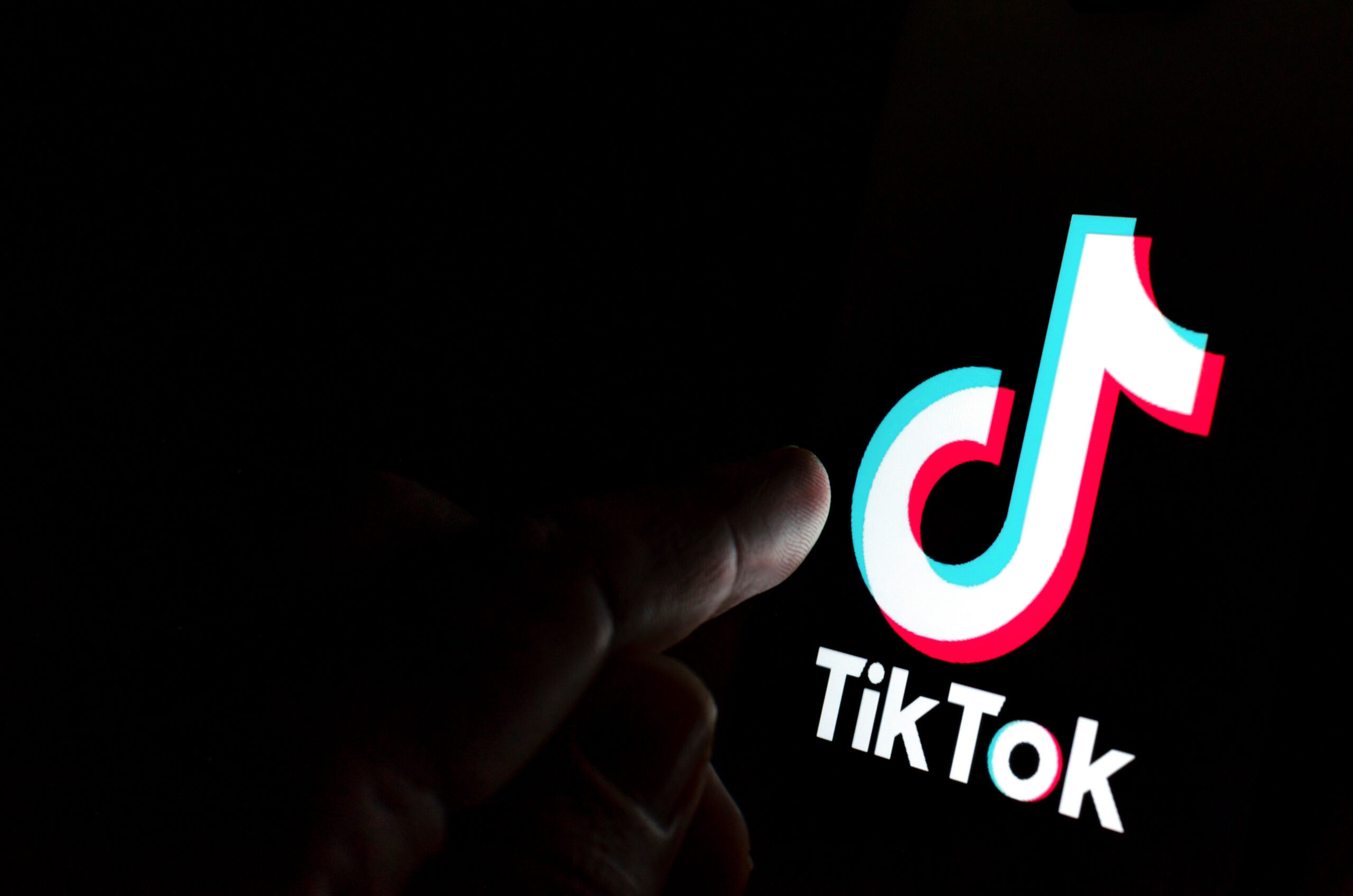Pressure on the social media platform TikTok has been mounting in recent weeks. TikTok CEO Shou Zi Chew’s testimony before a committee of House lawmakers on March 23 failed to assuage bipartisan concerns about data privacy for the app’s American users.
As Congress moves forward with legislation, the Chinese-owned short-form video-hosting service is faced with selling its US subsidiary to an American company—which China firmly opposes—or else being banned by Congress.
TikTok has seen a meteoric rise since its international launch in 2017. After surpassing both Twitter and Snapchat in terms of active users in 2018, the app went on to reach 1 billion monthly active users globally in 2021, and by June 2022, it had over 1.7 billion active users, making it second only to Facebook.
To understand the impact that a TikTok ban could have, BanklessTimes.com has collated the following data on the app’s global audience.
Where Is TikTok Most Popular?
TikTok is estimated to have a global advertising audience of 1.051 billion, according to the company’s self-service advertising tools. This figure is lower than the total number of TikTok users as these tools only report data for adult users, although anyone over 13 can use the app.
Let’s break this figure down and take a look at which countries have the most adult TikTok users in 2023.
1. United States
Despite bipartisan support for restricting the app, the US comes top of the list with 113.3 million TikTok users aged 18 and above. This constitutes 42.7% of the adult population.
On top of this, an estimated 67% of US teens use TikTok. In fact, CEO Chew said in March that the total number of monthly active users in America now stands at 150 million. This means that almost half of the population would be affected by a TikTok ban.
Americans use the app for a variety of reasons – with users spending on average 26.8 hours per month on the app, 3.3 more hours than the global average. It was revealed that a third of US TikTok users regularly get news from the platform, and as much as a quarter of all American adults under 30.
As well as using TikTok for entertainment, sharing content, and researching products, Chew stated that the platform is used by 5 million American businesses to reach customers. TikTok users can now even make in-app purchases thanks to the US roll-out of TikTok Shop. Although the feature is still in the testing phase in the US, American brands such as PacSun and Revolve are already selling their products through the app.
2. Indonesia
Just behind the US was Indonesia, which has 109.9 million TikTok users above the age of 18. This translates to 56.8% of the country’s adult population. Southeast Asia is the region with the highest number of users at 272 million. Over 200 million of these users come from Indonesia, Vietnam, and the Philippines alone.
Indonesia was also among the top countries in terms of the amount of time that users spend on the platform. Users in Indonesia spend an average of 29 hours per month on TikTok, which is 5.5 hours more than the global average.
TikTok’s audience in Indonesia has seen dramatic growth recently, with a quarter-on-quarter increase of 58%. This popularity is despite the platform briefly being banned in the country in 2018 for spreading “pornography, inappropriate content and blasphemy”.
The ban was lifted just eight days later after TikTok agreed to open an Indonesian office to liaise with local government and censor content. Just this year, TikTok Indonesia submitted to a request from the Communications and Information Ministry, Kominfo, to remove controversial “ngemis (begging) online” content, which they deemed elder abuse.
3. Brazil
The third-highest number of TikTok users above the age of 18 is in Brazil. The 82.2 million Brazilian adults who use TikTok represent 50.4% of the adult population. Although Brazil was the only South American country to make the top 15, Southern America is nonetheless the region home to the second-largest TikTok audience after Southeast Asia, with almost 158 million users.
The app saw year-on-year growth of 11% in its Brazilian audience, which could have been prompted by TikTok’s aggressive hiring and localized marketing efforts within the country in recent years.
The social media platform currently has more than 60 job openings in Brazil, amid reports that it plans to expand its e-commerce business, TikTok Shop, to the country by the first half of 2023.
3. Mexico
Mexico takes the fourth spot with 57.5 million users over 18, or 63.6% of the adult population. This gives it the 16th-highest advertising reach rate of any country. Mexicans also spend an above-average amount of time on the platform at 27.6 hours per month.
Mexico is another country that has seen a dramatic increase in the size of its TikTok audience, with quarter-on-quarter growth of almost 49%.
President López Obrador has stated that the Mexican government will not ban TikTok, despite restrictive legislation moving forward north of the border. The platform hasn’t been free from controversy in the country, however, with a number of Mexican school children being made unwell by participating in the dangerous TikTok “tranq challenge” this year.
5. Russia
Rounding out the top five is Russia, with 54.9 million adult TikTok users, constituting 47.9% of all adults in the country. Russians also spend 5.2 hours more than the global average on TikTok per month.
Russia actually saw a drop in its TikTok audience quarter on quarter and year on year. This is likely due to the platform blocking new and foreign content in Russia after the Kremlin criminalized what it calls “fake news” reporting on its invasion of Ukraine in the first quarter of 2022.
It is still possible for Russians to gain full access to TikTok with the aid of a VPN. In fact, in the third quarter of 2022, TikTok was still the fifth most popular social media platform in Russia.
It was less popular than VK, WhatsApp, Telegram, and Odnoklassniki, but six times more popular than Facebook and 7.5 times more popular Twitter, both of which had their services blocked by the Russian communications regulator.
TikTok’s Global Audience
The rest of the top 10 countries by most TikTok users aged 18 and above is composed of:
Vietnam with 49.9 million
The Philippines with 43.4 million
Thailand with 40.3 million
Turkey with 29.9 million
Saudi Arabia with 26.4 million
Notably missing from the list are China, where a separate domestic version of the app – Douyin – has over 700 million daily active users, and India, where TikTok has been completely banned since 2020.
In terms of the ad reach rate, ie, the proportion of adult populations that use TikTok, Middle Eastern countries are the clear leaders, taking all of the top five spots. The UAE and Saudi Arabia actually have reach rates calculated at above 100%, which could be due to factors such as duplicate accounts, users misstating their age, or inaccurate census data. Kuwait, Qatar, and Iraq also have reach rates above 90%.
The global reach rate is 18.7%. However, when ignoring the populations of China and India where TikTok isn’t accessible, an incredible 30.1% of adults in the rest of the world are estimated to be on TikTok.
Women are more likely to use TikTok than men, with the app’s audience consisting of 54.1% female users and 45.9% male users. Perhaps unsurprisingly, younger people are more likely to use the app, with 39% of users aged 18 to 24, and over 70% of users aged under 35.
Is TikTok Dangerous?
Some of the main concerns raised by Congress about TikTok were data collection, harmful content, and social media addiction in children. There is research to fuel these concerns. About half of Americans get news from social media, making it a potentially dangerous tool for spreading fake news, such as misinformation about the COVID-19 vaccine.
Children are particularly affected by social media. Surveys by Pew Research indicate that nearly half of American teens use the internet almost constantly, which is almost double the figure from a few years ago. What’s more, over a third said they spent too much time on social media, and 54% said it would be hard to give up.
Of course, these issues aren’t confined to TikTok and represent the risks of social media as a whole. So why is TikTok in particular being targeted by lawmakers? This would be down to Congress’ other major concern: Chinese influence.
TikTok is owned by the Beijing-based technology company ByteDance. US officials claim that the company is obligated by Chinese law to cooperate with the Chinese Communist Party, which could mean sharing data collected on millions of American users and controlling what content they see.
Surveys show that while Americans are wary of the data policies of US social media companies, they have even less confidence in Chinese ones. But could these sentiments and the targeting of TikTok be based more on Sinophobia than fact? According to cybersecurity professor Milton Mueller, there is no evidence that the CCP manipulates TikTok content, and TikTok collects fewer data points on users than other apps.
What’s Next for TikTok?
India has already banned TikTok, along with many other Chinese apps. The governments of Canada, Taiwan, and several European countries, along with EU bodies, have banned the app from staff devices amid security concerns. The US also banned TikTok from federal government devices in December.
According to a study, half of Americans support fully banning the app, which is more than twice as many that oppose it. Support for the ban is heavily correlated with age, with significantly more 18 to 29-year-olds opposing than supporting, while a huge 71% of over 65s are in favor of the ban. Unsurprisingly, the majority of TikTok users are against a ban.
Selling TikTok may not be possible due to the cost and Chinese opposition. The RESTRICT bill would enable the banning of foreign technology companies including TikTok, but it would likely receive pushback.
A ban could be ruled unconstitutional if it is deemed to infringe on the First Amendment right to freedom of speech. Certainly, TikTok and its users would be likely to challenge a ban, and the resulting lawsuits could seriously delay the potential implementation of it.
If the ban does go ahead, TikTok could be removed from app stores and updates for it turned off. This would still leave current users with access until the app becomes incompatible with their operating systems. Of course, anyone determined to see TikTok content would still be able to get it from other sources or use a VPN to get around local restrictions.













